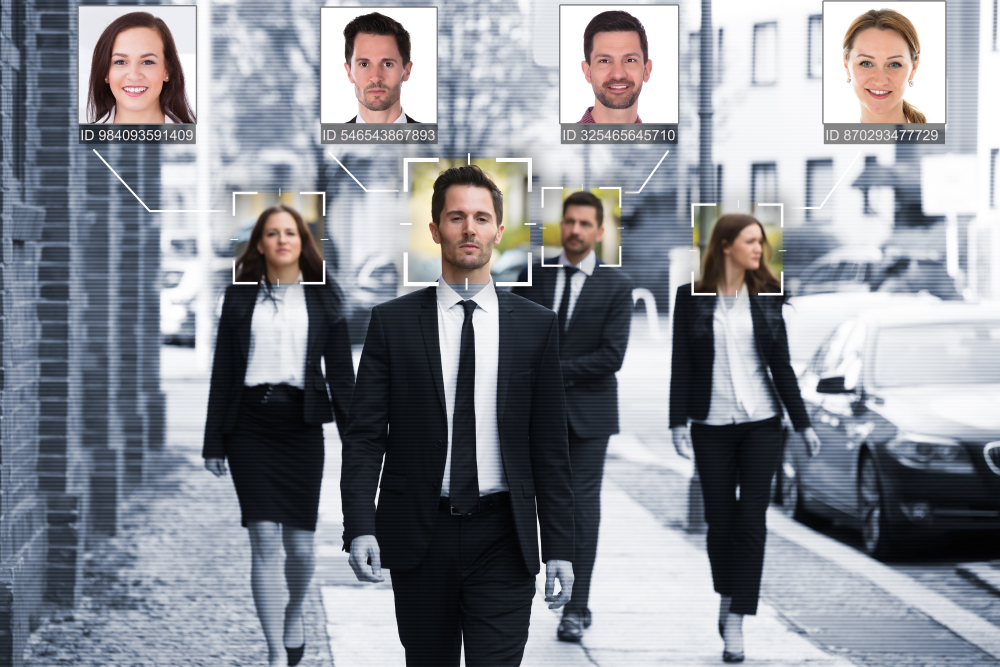Like it or not facial recognition is going to be a part of our future and, if it is not already installed, will soon be coming to an airport or a train station near you. The application of the technology by the transport industry for flow management is the first step towards more widespread use for applications ranging from law enforcement and government surveillance to user authentication by businesses. In the future our faces may even unlock our car doors or connect us with customer relationship management systems to help companies personalize their contact with us. Against this backdrop, the World Economic Forum on December 14 launched a toolkit for the responsible use of the technology by the transportation industry. The tool kit was co-designed with Tokyo-Narita Airport, Paris Airport (Groupe ADP) and France’s national state-owned railway company SNCF, and technology companies such as NEC and IDEMIA, as well as policy-makers from Japan, France and the European Union. The Forum said it plans to work with industry groups on a case-by-case basis to ensure transparent and ethical use of the technology. “During the global Covid-19 pandemic, an unprecedented number of industry actors are considering deploying facial recognition to improve their flow management processes. Yet this comes with various risks for customers and citizens alike,” Kay Firth-Butterfield, Head of Artificial Intelligence and Machine Learning, World Economic Forum, said in a statement. “This is the first global multistakeholder effort to mitigate these risks effectively.”
Facial recognition technology has beneficial uses, mostly through enhanced authentication and identification processes, such as unlocking a smartphone, boarding a plane, accessing online public services or catching criminals. But it has also come under increasing scrutiny for potentially undermining privacy, misidentifying people, perpetuating systemic racism and contributing to surveillance infrastructure.
Indeed, a news report published December 17 says that Chinese technology giant Alibaba Group Holding has facial recognition technology that can specifically pick out members of China’s Uighur minority. In reaction to a news story about surveillance industry researcher IPVM’s report Alibaba itself said it was “dismayed” a unit developed software which can tag ethnicity in videos, and that the feature was never intended to be deployed to customers. The report comes as human rights groups accuse China of forcing over one million Muslim Uighurs into labor camps in the region of Xinjiang, and call out firms suspected of complicity.
There are also concerns about “one to many” systems, a matching process used by law enforcement and powered by software algorithms that rapidly compare an unknown person’s picture to databases of millions of police mug shots and other identification photos. Misidentification or “false positive” rates are often far higher when pictures of minority subjects are analyzed, leading to mistaken arrests.
As a result, government officials in the U.S. and Europe have been talking about banning the use of facial-recognition technology by law-enforcement and public agencies.
Rather than forbidding use of the technology the Forum is working with multiple stakeholders on an industry-by-industry basis to make sure the technology is used responsibility.
“Context is everything because the risks are contextual,” Lofred Madzou, the Forum’s AI Project Lead, said in an interview with The Innovator. The Forum decided to first focus on facial recognition technology for passengers boarding aircraft, working with key industry players in the field. The toolkit guides organizations through a list of 10 Principles for Action. The idea is that the audit framework, run by third-party certification organizations, can build a new level of transparency and trust among end-users.
The technology has clear advantages for flow management. In 2017, the ADP Group – owner of the Paris-Charles de Gaulle and Paris-Orly airports, introduced facial recognition systems. Advantages include the fact that almost half of the more than 100 million passengers pass through the airports each year have passports compatible with facial recognition. The average processing time per passenger is twice as fast as fingerprint scanning – and not subject to passenger error. In the pilot study, boarding times were reduced by between 30% and 40%. Since 2018, many more airlines have started to use on-board facial recognition technology. In the U.S. alone, more than 15 airports have set up face matching systems to help board passengers faster and more safely, according to one news report. Trials have taken place at Los Angeles and San Jose airports, among many others.
The technology is creating a lot of interest in Europe too. For example, the airport specialist Amadeus has successfully tested facial recognition tehnology for flights operated by Adria Airways, Air France, and LOT Polish Airlines at Ljubljana airport. It found that the introduction of biometrics has also cut the average boarding time. The trial was conducted across 15 flights on which 175 passengers volunteered to enroll with their passport or ID card and a selfie-check.The live picture was sent to a server and then used to match the passenger when he or she passed in front of the camera at the departure gate. It took fewer than two seconds. With this simple enrollment of their data by smartphone, 98% of passengers were matched successfully and were able to board their flight.
Within the next few years Madzou says he believes the use of the technology will become more widespread. It could be applied, for example, during the Olympic Games for athlete identification and flow management.
The key is to ensure data governance and cybersecurity around the information that is captured, says Madzou. In the case of airports, passengers’ faces will be deleted 12 hours after their departure, he says. For more on the topic see the Forum’s report.
In Other News This Week:
CYBERSECURITY
Billions Spent On U.S. Defenses Failed To Detect Giant Russian Hack
The broad espionage attack on the U.S. government and private companies, underway since Spring and detected only a few weeks ago, is being called one of the most significant cybersecurity breaches in history. Technology company SolarWinds, which was the key steppingstone used by the hackers, said up to 18,000 of its customers had downloaded a compromised software update that allowed hackers to spy unnoticed on businesses and agencies for almost nine months. The company serves more than 425 firms on the Fortune 500, every one of the top-10 U.S. telecommunications companies and all branches of the U.S. military. Microsoft said December 17 that it too had been hacked and identified 40 companies, government agencies and think tanks that the suspected Russian hackers, at a minimum, had infiltrated. Nearly half are private technology firms, Microsoft said, many of them cybersecurity firms, like FireEye, that are charged with securing vast sections of the public and private sector. The U.S. National Security Agency issued a rare “cybersecurity advisory” Thursday detailing how certain Microsoft Azure cloud services may have been compromised by hackers and directing users to lock down their systems.. The attacks hit the U.S. departments of Homeland Security, Treasury and Commerce, according to Reuters. Parts of the Defense Department were breached, the New York Times reported, while the Washington Post reported that the State Department and National Institutes of Health were hacked. The United States issued an emergency warning, ordering government users to disconnect SolarWinds software. Softwinds said in a regulatory disclosure it believed the attack was the work of an “outside nation state” that inserted malicious code into updates of its Orion network management software issued between March and June this year.
In a related story:
Companies May Face Steep Fines For Breaching EU Cybersecurity Rules
Large energy, transport and financial companies as well a makers of medical and computer devices could be fined up to 2% of their global turnover for breaching EU cybersecurity rules under a European Commission proposal. With two in five EU employees working from home due to the COVID-19 pandemic and one in eight businesses hit by cyber attacks, the EU executive says its proposal is meant to bolster Europe’s collective resilience against cyber threats.
COMPETITIVENESS
Study Finds Few Economies Are Ready For Long Term Prosperity Through Digitization, Green Investments And Improved Public Services
This year’s World Economic Forum Global Competitiveness Report finds that countries with advanced digital economies and digital skills, robust social safety nets and previous experience dealing with epidemics have better managed the impact of the pandemic on their economies and citizens.
MOBILITY
Lyft, Motional To Launch Multi-City U.S. Robo-Taxi Service In 2023
Lyft and Motional will launch a multi-city U.S. robotaxi service in 2023, the partners said December 16. The driverless vehicles will be provided by Motional, a joint venture between Korean automaker Hyundai and auto supplier Aptiv, and will be based on a Hyundai platform. The vehicles will be deployed in Lyft’s ride-sharing network in the United States, the country’s second-largest after that of Uber
Amazon, Shell, Bill Gates Are Backing A Hydrogen Plane Startup
ZeroAvia, a California-based startup developing hydrogen-electric technology to power aircraft, said it’s raised $21.4 million from investors including Amazon (, Shell and Breakthrough Energy Ventures, a company established by Bill Gates in 2015.
FOOD
Sony AI Launches Gastronomy Project To Apply AI To Cooking
Sony AI launched what it calls The Gastronomy Flagship Project , which is comprised of an AI-powered app for creating recipes, a robot that can assist chefs with cooking, and a “community co-creation” plan that will serve as the foundation for the first two efforts. To create the app, Sony AI says it will leverage a range of data sources, including recipes and ingredient information like taste, aroma, flavor, molecular structure, and nutrients to train “proprietary AI algorithms” that will assist “the world’s top chefs” in pairing, recipe design, and menu creation. The company notes that recipe creation is a challenging research area for AI because of the infinite combination of ingredients, as well as constraints such as location, climate, season, and health and food preferences that must be taken into account.
ENERGY
JD builds AI Control System that Can Save China’s Thermal Power Plants Billions And Reduce Pollution
JD Digits, the digital technology arm of e-commerce firm JD.com, has launched an artificial intelligence-driven system that improves the efficiency of thermal power plants, as China’s tech giants continue to apply AI technologies to a range of traditional industries to improve performance.The AI control system, which has been rolled out in Langfang city in northern Hebei province, automatically adjusts a range of variables for thermal boilers in real time, including the coal feeding process, air distribution and water vapour levels, according to a statement from the company.
RETAIL
Walmart Partners With TikTok To Sell Merchandise While LiveStreaming
Walmart, which is looking to invest in TikTok, said it would partner with the Chinese-owned video-sharing app to sell items seen on a livestream by creators featuring the retailer’s fashion merchandise. Walmart said viewers on TikTok, which reaches 100 million U.S. users a month, can shop for fashion items featured in content from popular creators without having to leave the platform. The livestream will take place on Friday on Walmart’s profile page on TikTok.
MINING AND METALS
Blockchain Project Traces Greenhouse Emissions From Mine To Market
The World Economic Forum’s Mining and Metals Blockchain Initiative released a proof of concept that uses distributed ledger technology to track embedded greenhouse gas emissions. The founding members of the initiattives– Anglo American, Antofagasta Minerals, Eurasian Resources Group, Glencore, Klöckner & Co, Minsur, and Tata Steel joined forces in October 2019 to design and explore blockchain solutions to accelerate responsible sourcing in the industry. By pooling resources and costs, the mining and metals companies aim to accelerate future adoption of a solution for supply chain visibility and ESG requirements. The proof of concept responds to demands from stakeholders to create “mine to market” visibility and accountability.
TECH BACKLASH
Big Tech Is Facing AntiTrust Cases, Threats Of Breakups And Fines In The U.S. and EU
Various U.S. federal agencies and state attorneys general are launching competition-focused probes and lawsuits against Big Tech.
Meanwhile, the EU has raised the stakes in its efforts to curb Big Tech by threatening to break up companies that repeatedly engage in anti-competitive behavior in the first overhaul of the bloc’s rules for Internet businesses for two decades.
Why should corporates care? In the U.S. dueling antitrust lawsuits against Facebook highlighted the social-media giant’s acquisitions of photo-sharing platform Instagram and messaging service WhatsApp. But the allegations of anti-competitive practices included another through-line with potentially far-reaching implications for enterprise technology companies: data sharing. The suits filed Wednesday by the Federal Trade Commission and 46 state attorneys general argue Facebook leveraged its trove of user information both to entice third-party developers onto the platform and to bend them toward its will. The mechanism for such data sharing—application programming interfaces—is a crucial tool for software engineers and a key element of digital industries such as advertising and financial technology.“[The case] could set precedents for any platform that creates a service, shares data through an API and has conditions on that data sharing,” Sinan Aral, director of the MIT Initiative on the Digital Economy, told the Wall Street Journal.
To access more of The Innovator’s News In Context articles click here.






